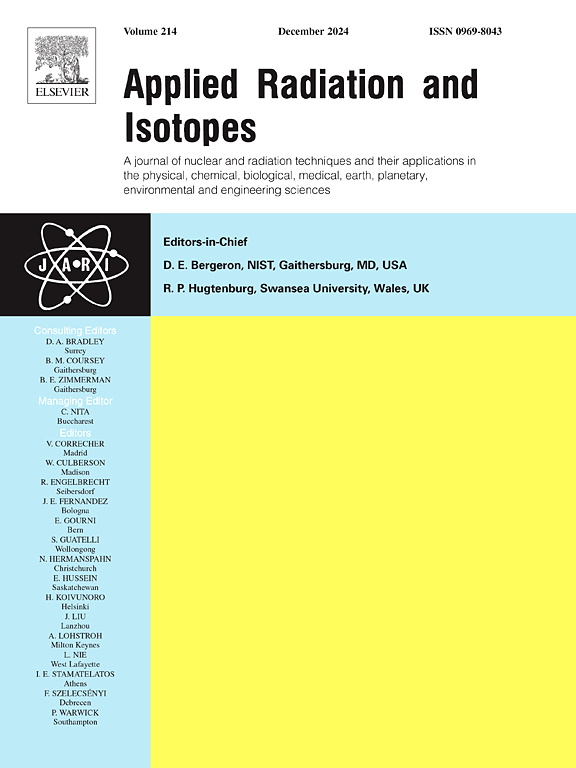Study of dose component discrimination method using micelle gel dosimeters for quality assurance in boron neutron capture therapy
IF 1.6
3区 工程技术
Q3 CHEMISTRY, INORGANIC & NUCLEAR
引用次数: 0
Abstract
As a new tool for quality assurance in boron neutron capture therapy, we focused on gel dosimeters that can estimate three-dimensional dose distribution. To establish a method that combines multiple types of radiochromic gel dosimeters sensitive to specific dose components for the discrimination of the dose components, the neutron and gamma-ray responses of leucocrystal violet micelle gel dosimeters were characterized. For the estimation of boron or nitrogen dose components, dosimeters containing boric acid or urea as a sensitizer were prepared, while for hydrogen dose components, light-water-based and heavy-water-based dosimeters were prepared. For investigating the neutron and gamma-ray response characteristics, the Heavy Water Neutron Irradiation Facility installed at the Kyoto University Reactor and the Co-60 gamma-ray irradiation facility were used. Based on the characterization results, a dose component discrimination method using four different types of gel dosimeter compositions was proposed.
胶束凝胶剂量计剂量成分鉴别法在硼中子俘获治疗质量保证中的应用研究
作为保证硼中子俘获治疗质量的新工具,我们重点研究了能够估计三维剂量分布的凝胶剂量计。为了建立一种结合多种对特定剂量组分敏感的放射致色凝胶剂量计进行剂量组分鉴别的方法,对白晶紫胶束凝胶剂量计的中子和伽马射线响应进行了表征。对于硼或氮剂量分量的估算,采用硼酸或尿素为敏化剂的剂量计,而对于氢剂量分量的估算,采用轻水和重水剂量计。为了研究中子和伽马射线的响应特性,使用了安装在京都大学反应堆的重水中子辐照装置和Co-60伽马射线辐照装置。基于表征结果,提出了一种使用4种不同类型凝胶剂量计组合物的剂量成分判别方法。
本文章由计算机程序翻译,如有差异,请以英文原文为准。
求助全文
约1分钟内获得全文
求助全文
来源期刊

Applied Radiation and Isotopes
工程技术-核科学技术
CiteScore
3.00
自引率
12.50%
发文量
406
审稿时长
13.5 months
期刊介绍:
Applied Radiation and Isotopes provides a high quality medium for the publication of substantial, original and scientific and technological papers on the development and peaceful application of nuclear, radiation and radionuclide techniques in chemistry, physics, biochemistry, biology, medicine, security, engineering and in the earth, planetary and environmental sciences, all including dosimetry. Nuclear techniques are defined in the broadest sense and both experimental and theoretical papers are welcome. They include the development and use of α- and β-particles, X-rays and γ-rays, neutrons and other nuclear particles and radiations from all sources, including radionuclides, synchrotron sources, cyclotrons and reactors and from the natural environment.
The journal aims to publish papers with significance to an international audience, containing substantial novelty and scientific impact. The Editors reserve the rights to reject, with or without external review, papers that do not meet these criteria.
Papers dealing with radiation processing, i.e., where radiation is used to bring about a biological, chemical or physical change in a material, should be directed to our sister journal Radiation Physics and Chemistry.
 求助内容:
求助内容: 应助结果提醒方式:
应助结果提醒方式:


